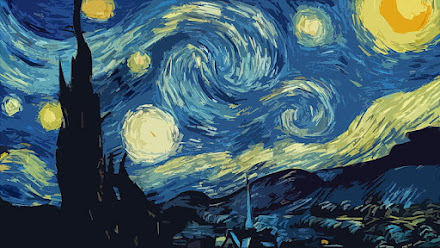Renaissance Blog: The Arnolfini Portrait
The Arnolfini Portrait
Jan van Eyck
Introduction
For this blog, I have chosen The Arnolfini Portrait which was created back in 1434 by Jan van Eyck's. Its amazing details with deep symbolism invites eyes to reflect on humanism and the memoir of its subjects. This oil painting which was held in the National Gallery in London, is one of the most beautiful works of the Northern Renaissance.
Art Appreciation
If I were to look at this painting as if it was the first time again, it gave me the feels of that there is something personal and serious going on. The way the lines and curves are used are amazing, The figures art itself look very natural which made it seem more realistic. The colors in the painting are undeniably noticeable as well. Having Van Eyck pay close attention to detail especially the colors makes the painting feel realistic.
Looking at both of the subjects' faces, I felt a sense of curiosity about them. Probably from the look of their faces. I wanted to know who they were, what their story was about, what's with the look on their faces. But art is art. Art either gives you answers or wonders. Seeing the beauty and complexity of this painting, I would own one. Not because I love art, but maybe because there's something about the painting that makes me uneasy but also gives me a sense of calmness.
Connection to Influences
This painting I believe is into the theme of humanism which was a big deal during the Renaissance. The way the Arnolfini couple is portrayed shows the humanist idea of individual experience and personal identity. The way they had these fancy clothes and nice background show off their wealth or that they had money. However, other than that, it's not just about what is it with their wealth. But the way they hold each others' hands show also how important a relationship is to them as well.
Conclusion
Jan van Eyck's "The Arnolfini Portrait" really shows off the art of emotions being pointing to the Northern Renaissance. From the lines, shapes, colors and textures, they're all in one art to to tell a strong story about human experience, pointing out the humanist ideas back then. I want everyone to see just how I see it that this is not just a beautiful painting, but it's also has deep messages that talk about humanity which makes it even more beautiful.
Works Cited
- Panofsky, Erwin. Meaning in the Visual Arts. Vintage Books, 1970.
- National Gallery. “The Arnolfini Portrait.” National Gallery, link.
- Get link
- X
- Other Apps



Hi Lily! What is appealing to me in this painting is bright the colors on the woman's clothes, it really makes her stand out. It's as if Jan Van Eyck wanted us to focus our attention on her in the painting. I do agree the painting gives me an eery sort of feeling. The way the bodies are positioned in the painting along with how the man is staring straight forward and the woman is staring at him. That would be what I didn't find appealing in the painting. I do believe the painting matches the theme, humanism. Humanism is shown in this painting through what marriage rituals and wealth looked like in the Northern Renaissance. Individualism is shown as well, being the painting is of a couple and is not a religious scene or city. One thing I learned about this painting is that it shows iconography, which is shown by deciphering symbolic meaning. Thank you for sharing!
ReplyDeleteI find the Arnolfini portrait nice. The oil painting is cleared the colors in it are all nicely done. The painting looks very realistic to me. The married couple do not look very happy. I wonder if it is an arrange marriage. The woman looks like she is going to have a baby. They look like they are wealthy. It makes me wonder, how life would have been there in 1434. All of these painted portraits are beautiful and it is all well preserved. I am glad these paintings are saved to this day.
ReplyDeletethe most appealing to me in the art that you choose for this blog is the detail of the dress and the beautiful colors. the theme of the painting that you explained or the connection to influences. good job !
ReplyDelete